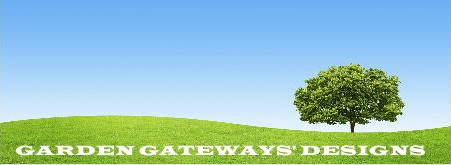PRESENTS
Vertical Gardening

Vertical gardening is the practice of growing plants in or on walls or in vertical layers within a structure, rather than in horizontal spaces on-or-in the ground.
This method of landscape or agriculture culture can be used to provide a purely decorative garden effect for foliage plants or flowers and/or to grow an edible crop of vegetables and herbs in a relevantly small or confined area.

These gardens can be as minimal as having a few container modules or vines on a wall to the entire side of large downtown city building. There are almost unlimited possibilities, but the basic idea is that you are growing upwards, thereby using less space rather than laterally outward and thereby minimizing the space on any given horizontal surface.
Desirable factors that occur when creating vertical gardens are generally having to use little or no soil and less irrigation. Soil born pathogens or insects are less likely to infest aerial crops and if they do, they are more easily seen and treated. It is also often much easier to maintain your crops when they are more accessible at walking or sitting heights rather than having to bend or sit on the ground. This can also be a great asset in an enabling garden where a user may be in wheelchairs or on walkers.

But perhaps the biggest advantage to growing vertically is having to use less space. This allows want-to-be residential farmers to find limited spaces in their house environs, balconies or porches to grow the best herbs and vegetables or simply surround themselves with foliage and flowers. Even cellars may be an acceptable venue with the use of various grow-light options.

•These walled or free standing mounted systems are essentially indoor/outdoor modular planters with several levels of vertically spaced containers or planters.
• This vertical design saves space and water as irrigation water flows through a sprinkler system passing from the top containers down to all the lower containers and then usually recycled back to the top containers to continue the process.
•Different sizes of these structures can be used to fit the designer’s needs. They can be tall with multiple levels of plants for a larger garden, or it can be built lower to the ground for easier access.
•Using the vertical space instead of horizontal space is an important feature for those sites short of planting area such as the normal situation within condominiums or apartments with small balconies or perhaps with a rooftop available for this function.
•Vertical gardens can be custom designed and created for the specific space desired or purchased ready-made in modular forms from manufacturers of these systems.
• The various vertical plantings systems used may be described as;
1. Traditional: These would be elevated plantings using soil as the growing medium.This is the standard method of growing plant material and one that we are all used to. The growing medium is always soil and soil additives placed in containers of many descriptions with irrigation being supplied manually or automatically as desired.

2. Hydroponics: Elevated systems growing plantings in water.
This is a technique of growing plants in nutrient solutions that contain water and fertilizers with or without using an artificial medium such as sand, gravel, etc. Since hydroponically grown plants are not embedded into a soil medium they absorb required nutrients from the provided nutrient solution. The artificial medium provides mechanical support, moisture, and retains nutrients.
There are six basic types of hydroponics systems depending on the nutrient supplying method. They are as follows:
• Wick system
• Water culture system
• Ebb and flow (flood and drain) system
• Drip systems (recovery/ non- recovery)
• Nutrient film technique (NFT)

3. Aeroponics: Elevated systems growing plantings in recycled water. Aeroponics is a form of hydroponics where plants roots are suspended in a chamber and nutrient solution is sprayed from below. This air culture does not require a growing medium like in other hydroponic systems (except for NFT). Spraying exposed roots with a nutrient solution allows roots to absorb more oxygen than would be the case in the soil (geoponic) system. It has been reported that, in air culture, plant growth and metabolism rate increased ten times than that of soil.

4. Vertical farming, (From Wikipedia) is the commercial practice of producing food in vertically stacked layers, such as in a skyscraper, used warehouse, or shipping container. The modern ideas of vertical farming use indoor farming techniques and controlled-environment agriculture (CEA) technology, where all environmental factors can be controlled. These facilities utilize artificial control of light, environmental control (humidity, temperature, gases…) and fertigation. Some vertical farms use techniques similar to greenhouses, where natural sunlight can be augmented with artificial lighting and metal reflectors.

This very brief article along with the pictures and videos provided should give you some idea of how this very useful and fun and environmentally sound method of agriculture can be. With a little research you can discover how to create your own vertical gardens, or you can purchase a ready made system designed for your circumstances and needs.
Visit the Facebook Vertical Gardening Community
http://on.fb.me/HmllNU

Book Of The Month
How to Create Beautiful Vertical Gardens, Container Gardens and Aeroponic Vertical Gardens at Home
by Tom Corson-Knowles





